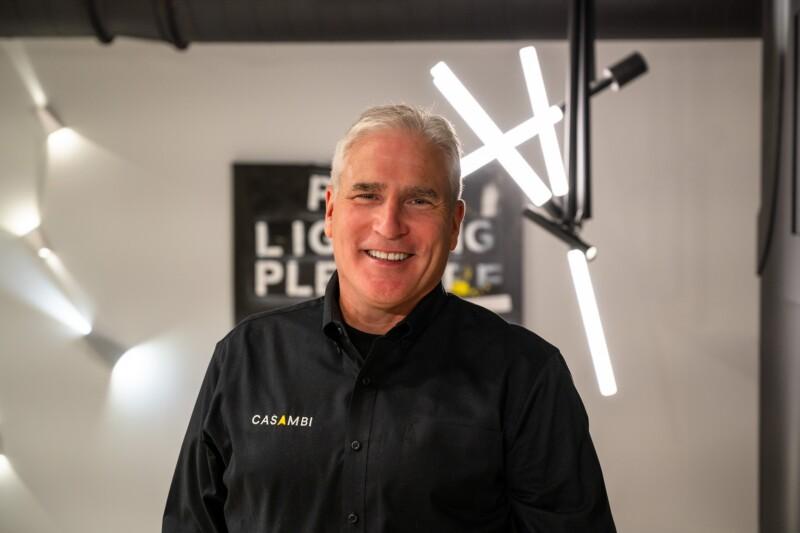Technologies to help build an NHS fit for the future

As uncertainty looms over the NHS’ future amidst election preparations, there are sustainable technologies that can significantly improve its estate today.
The next UK general election is fast approaching. Labour, the favorite to win, has made “build[ing] an NHS fit for the future” a key campaign promise. However, some fear a new government will critically impact the scale and pace of future developments. Building.co.uk has published a fantastic pre-election briefing outlining the current state and potential future of investment in the NHS estate, focusing particularly on the New Hospital Programme (NHP) announced by former Prime Minister Boris Johnson.
The NHP aimed to build 40 new hospitals with a budget of £22 billion. The first hospital under this program is set to open this spring (2024), nearly five years after the announcement. Despite this progress, significant delays and bureaucratic hurdles have plagued the NHP. There is uncertainty about whether the complete plan will be executed, especially with an upcoming election that could shift political priorities.
Although there has been a modest rise in capital spending in healthcare over the past few years, the NHS estate still faces a severe underinvestment issue. According to the above-mentioned briefing, the National Audit Office highlighted that the NHP has not provided value for money and is unlikely to meet its original targets. Moreover, there’s a substantial maintenance backlog costing £11.6 billion, affecting the quality and safety of existing facilities – the report highlights critical repairs such as leaky roofs, ceiling collapses, and broken lifts.
The forthcoming election adds uncertainty to the continuation and expansion of the NHP. Labour has not committed to specific capital spending on building new hospitals, suggesting a possible reassessment of ongoing and planned projects to ensure value for money. Naturally, contractors and consultants in the construction industry are keenly watching developments. The broad sentiment is mixed, as some see opportunities, while others anticipate more delays.
Hospital 2.0
The industry is also exploring novel ways to reduce costs and speed up development. Hospital 2.0 is the New Hospital Programme’s initiative aimed at streamlining NHS construction through standardized hospital designs, procurement processes, and off-site construction techniques. Expected to make projects 25% cheaper and 20% faster to build, Hospital 2.0 represents a significant shift towards efficiency in healthcare infrastructure development. Although its full implementation is still pending, the NHS is preparing to launch this concept, with anticipated substantial impacts on future hospital construction projects.
The thoughtful application of technology and the integration of digital solutions into healthcare settings align with the Hospital 2.0 goals, offering swift and cost-effective improvements. Smart lighting control, such as Casambi, is a prime example. Its easy implementation and affordability make it a valuable investment, delivering immediate benefits to the NHS, its staff, and patients alike.
Casambi benefits for hospitals and healthcare facilities
Ulster Hospital in Belfast, Ireland, recently opened a brand new Acute Services Block. The newly constructed eight-story building with over 31,000m2 of floor space illustrates a forward-thinking approach to healthcare infrastructure, harnessing technology to enhance patient well-being and operational efficiency. By integrating Casambi’s wireless, Bluetooth® Low Energy-based lighting control system, the hospital has created a less clinical and more welcoming environment reminiscent of a hotel, thereby accelerating patient recovery. Research has shown that there is a direct correlation between better indoor lighting conditions and a reduced average length of stay for inpatients, thereby effectively decreasing expenses for hospitals.
Employing a wireless solution like Casambi enabled seamless adaptation of lighting settings without the need for expensive, disruptive installations or modifications, crucial in the dynamic setting of a hospital where requirements may evolve. The system’s ease of use and customization cater to diverse needs across various hospital areas, empowering staff to adjust settings without specialized skills or external assistance. In patient bedrooms, advanced sensor-based functionalities such as monitoring movements to alert nursing staff and personalized lighting settings contribute to enhanced patient care. Similarly, automated lighting control programs optimize energy usage by adjusting illumination levels based on occupancy and availability of natural light, ultimately reducing electricity consumption and helping Ulster Hospital to decrease spending on utilities.
In critical environments such as this Acute Services Block, maintaining uninterrupted functionality, particularly during power failures, is paramount. The resilience of the Casambi system ensures continuous lighting operation, thereby enhancing safety and security. Rooted in scalability and interoperability, the Casambi system is also engineered to adapt alongside the hospital’s expansion and seamlessly interface with various product types, brands and BMS systems. This diminishes dependence on any single source and facilitates the integration of incoming technologies in the future too.
Wired control vs wireless control
The capital-intensive nature of wired systems, including material and labor expenses, is mitigated with Casambi’s wireless solution, making it a more economical choice. Additionally, the streamlined installation process and reduced coordination time expedite project delivery, enabling buildings to become operational much faster.
For example, the lighting design concept at the Prince and Princess of Wales Hospice in Glasgow also aimed to revolutionize patient care by providing a modern, compassionate environment. Inspired by the Sengetun model of care, the hospice prioritizes “placemaking,” ensuring spaces are designed for privacy, dignity, and compassionate care for patients of all ages.
Recognizing the impact of lighting on mood and aesthetics, a circadian lighting control system was implemented to enhance patient well-being. Initially, a wired control specification was considered but proved financially challenging. To address budget constraints, the project stakeholders proposed the cost-effective Casambi wireless solution instead, which not only met but exceeded the functionality of the wired specification.
Casambi’s wireless system was installed throughout the entire hospice, providing control over every single light fitting. This cost-effective solution allowed the hospice to achieve its vision for patient care while remaining within budget constraints.
As the NHS grapples with ways to modify its estates and infrastructure to become more sustainable and patient-centric yet easily adaptive to new processes and technology, Casambi offers a great solution to help meet its needs.
Want to read more? Download our whitepaper on wireless lighting control for hospitals and healthcare facilities. Casambi is not just for new builds. You’ll also learn just how easy it is to retrofit!


